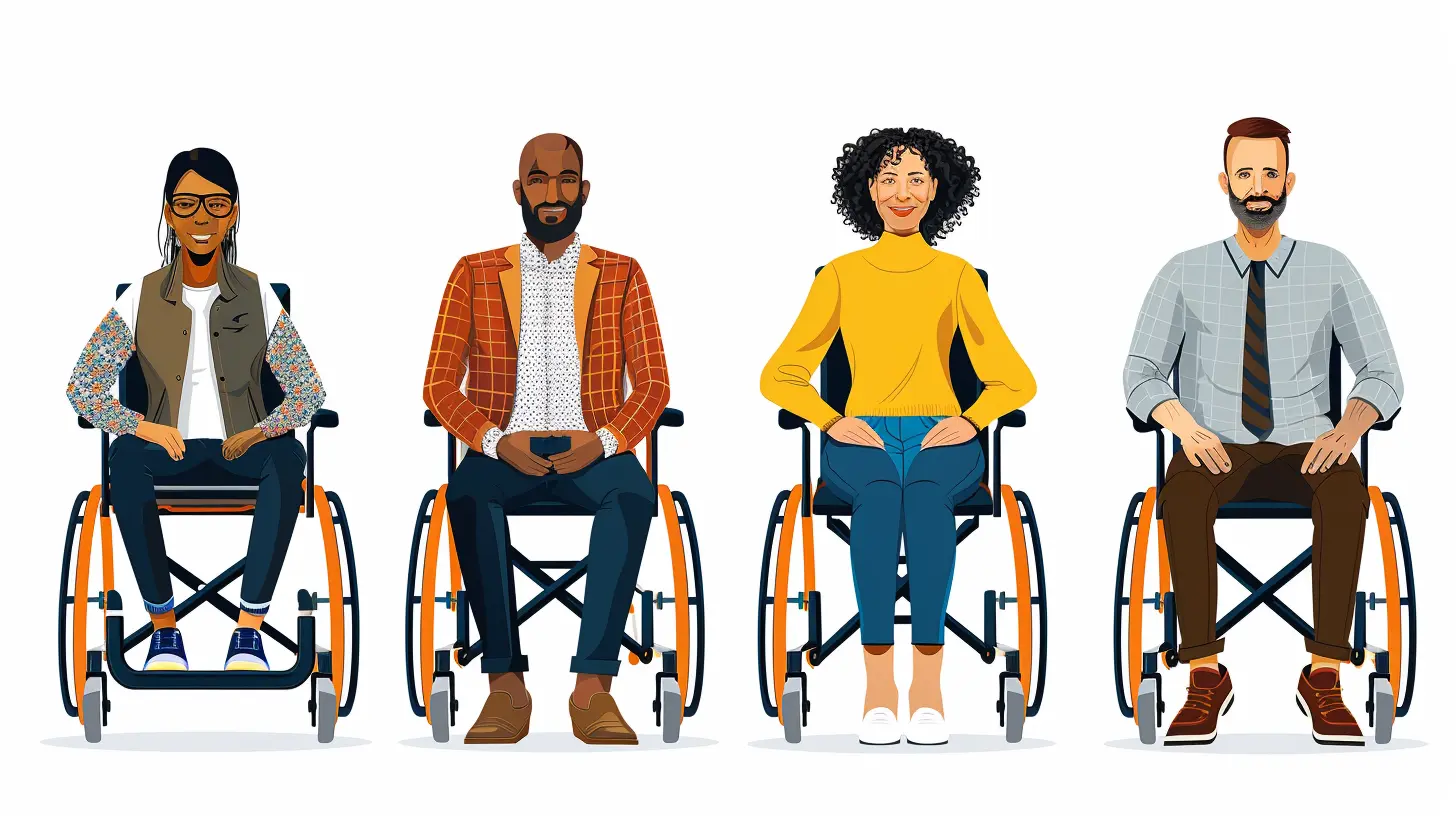1 April 2025
When it comes to building an inclusive and successful workplace, creating accessible workforce solutions for people with disabilities isn't just a box to check—it’s a game-changer. Think about it. By designing work environments that actively embrace individuals with disabilities, you're not only leveling the playing field but also unlocking untapped potential. Companies that prioritize accessibility often find themselves reaping the benefits of diverse perspectives, increased innovation, and improved employee satisfaction.
But how exactly do we get there? How do businesses go beyond lip service and create meaningful opportunities for people with disabilities? Let's roll up our sleeves and dive into this incredibly important topic. Whether you're a business owner, an HR professional, or just someone who cares about workplace equality, this article will walk you through actionable steps to make a difference.
Why Accessibility in the Workforce Matters
Let’s start with the why. Why should accessibility be a priority in your workplace? For starters, it’s the right thing to do. But beyond that, it’s good for business. Here’s why:1. Tapping Into a Broader Talent Pool
Did you know that approximately 15% of the world’s population lives with some form of disability? That’s an estimated 1 billion people globally. By creating accessible workforce solutions, you’re opening the door to an ocean of talent that’s often overlooked. Imagine running a marathon and only inviting half the runners—that’s what it feels like when companies ignore people with disabilities.
2. Improved Innovation
People with disabilities often have to think outside the box to navigate a world that isn’t designed for them. That problem-solving mindset is gold in a workplace. A diverse team—especially one that includes individuals with disabilities—brings fresh perspectives and creative solutions to the table.
3. Enhanced Brand Reputation
Companies known for inclusivity send a powerful message to employees, customers, and partners. When businesses champion accessibility, it shows they value equality and fairness. Think about it—don’t we all want to support brands that stand for something bigger than just profit?
Common Barriers to Accessibility
Before discussing solutions, it’s crucial to address the barriers people with disabilities face. It’s like trying to fix a pipe without diagnosing where the leaks are. Once we know the challenges, we can work on knocking them down. Here are some of the most common obstacles:1. Physical Barriers
Simple things like stairs, narrow doorways, or inaccessible restrooms can make the workplace a nightmare for individuals with mobility challenges.
2. Technological Barriers
Ever tried navigating a website that’s not optimized for mobile? Frustrating, right? Now imagine using workplace software that isn’t compatible with assistive tools like screen readers or voice recognition software. That’s the reality for many employees with disabilities.
3. Attitudinal Barriers
Let’s call it what it is: ignorance. Some people still underestimate the capabilities of individuals with disabilities. Outdated stereotypes and biases can stop qualified candidates from even getting a foot in the door.
4. Communication Barriers
For individuals who are deaf, hard of hearing, or have speech impairments, a lack of accessible communication tools can be a significant hurdle.
Building Accessible Workforce Solutions: Where to Start?
Creating an inclusive workplace doesn’t happen overnight. It’s a journey. But the good news? Every step you take makes a difference. Let’s break down what you can do to make your workplace inclusive—starting today.1. Implement Universal Design Principles
Think of universal design as the Swiss Army knife of accessibility. It’s all about creating environments that work for everyone, not just people with disabilities. For example:- Replace stairs with ramps wherever possible.
- Design office layouts with wide pathways for wheelchairs or mobility aids.
- Equip elevators with braille buttons and auditory signals.
The beauty of universal design is that everyone benefits. A ramp might assist someone using a wheelchair, but it’s also handy for someone pushing a stroller or hauling heavy equipment.
2. Upgrade Your Technology
Technology can be a game-changer—or a dealbreaker. Make sure your workplace tools are accessible.- Invest in screen-reader-friendly software.
- Provide employees with options for voice-to-text tools and alternative keyboards.
- Caption all video content for employees who are deaf or hard of hearing.
Pro tip: Partner with accessibility experts to audit your tech stack. Sometimes, the gaps aren’t obvious until someone points them out.
3. Train Your Team on Disability Awareness
Let’s be real—many barriers stem from ignorance or misconceptions. Combat this by educating your employees. Schedule workshops on disability etiquette and inclusion. Topics could range from how to communicate with colleagues with disabilities to understanding invisible disabilities like chronic illnesses or mental health challenges.Think of it as adding new tools to your team’s toolbox. The more informed your staff is, the more inclusive they’ll be.
4. Provide Reasonable Accommodations
Sometimes, accessibility comes down to one word: flexibility. Providing reasonable accommodations doesn’t have to mean a complete office overhaul. It could be as simple as offering remote work options, adjustable desks, or flexible schedules to employees who need them.Not sure what someone needs? Ask! More often than not, employees with disabilities know exactly what would help them succeed.
5. Foster an Inclusive Culture
Accessibility isn’t just about policies—it’s about people. Build a culture where employees with disabilities feel valued, supported, and included. Celebrate diversity through events, initiatives, or even employee resource groups focused on disability inclusion. Remember: inclusion is more than a seat at the table. It’s also about having a voice that’s heard and respected.
The Role of Leadership in Driving Change
Leadership plays a critical role in creating accessible workforce solutions. If you’re in a decision-making role, ask yourself this: Am I leading by example? Accessibility shouldn’t just be an HR initiative; it needs to be a company-wide priority.Here’s how leaders can get involved:
- Set the tone by openly championing accessibility efforts.
- Allocate resources for accessibility upgrades and initiatives.
- Measure progress by tracking metrics like disability hiring rates or employee satisfaction.
Remember, when leaders prioritize accessibility, it trickles down throughout the organization.
The Bottom Line: Accessibility Benefits Everyone
At the end of the day, creating accessible workforce solutions isn’t just about compliance or checking off diversity quotas. It’s about recognizing that talent comes in all forms and ensuring each person in your team can thrive. Accessibility benefits everyone. What’s good for employees with disabilities often ends up making the workplace better for all employees.Think of accessibility like Wi-Fi—it might have been designed for convenience, but no one would argue that it’s not essential now, right? The same logic applies to creating an inclusive workplace.
So, what’s stopping you? Take that first step today. Review your hiring practices, assess your workplace environment, and don’t be afraid to reach out to inclusion experts for help. Because a workplace that works for everyone is a workplace that works, period.




Niko Middleton
Embracing inclusive workforce solutions not only empowers individuals with disabilities but also enriches organizational culture, fostering diverse perspectives that drive innovation and success.
April 2, 2025 at 4:19 AM